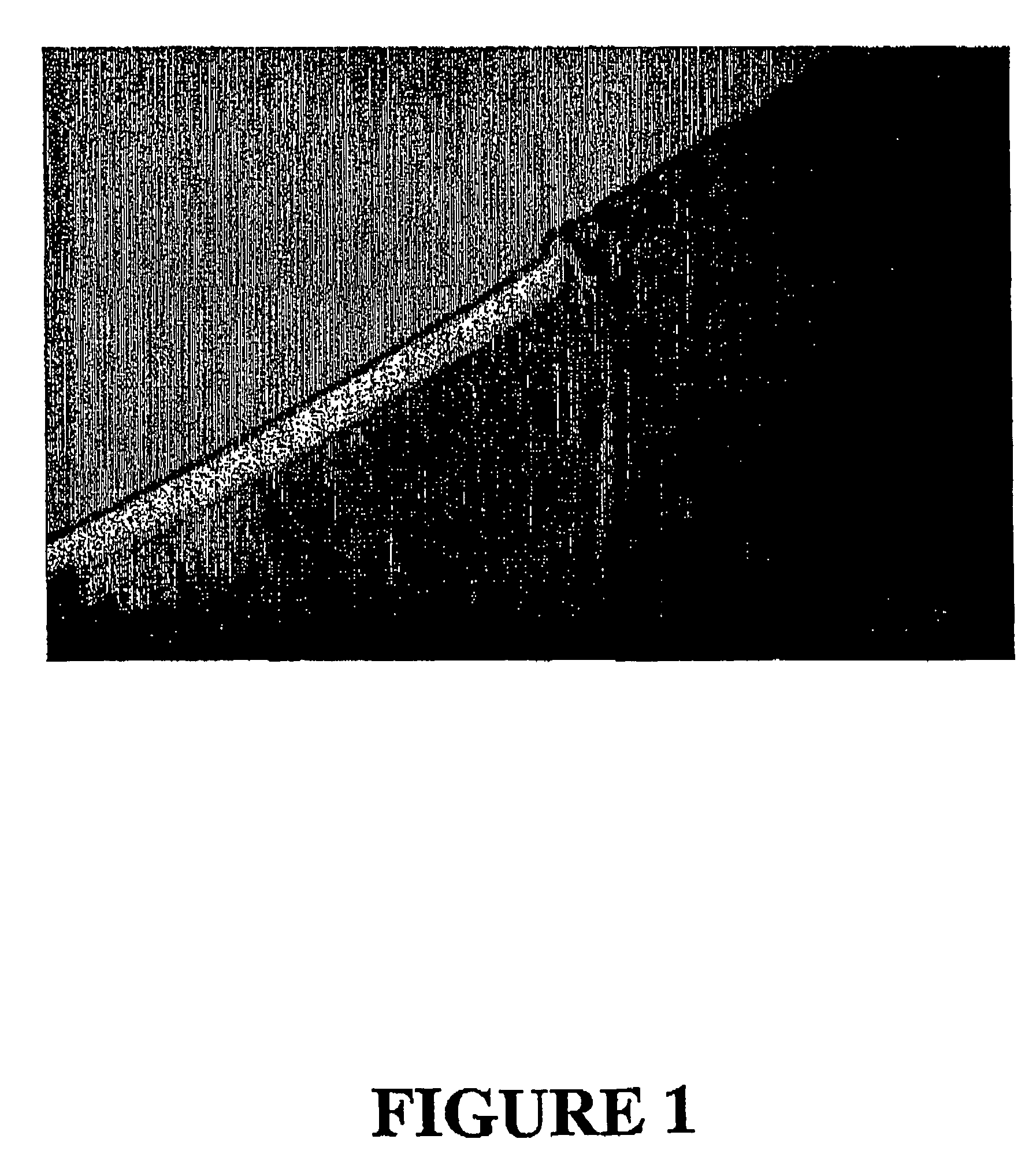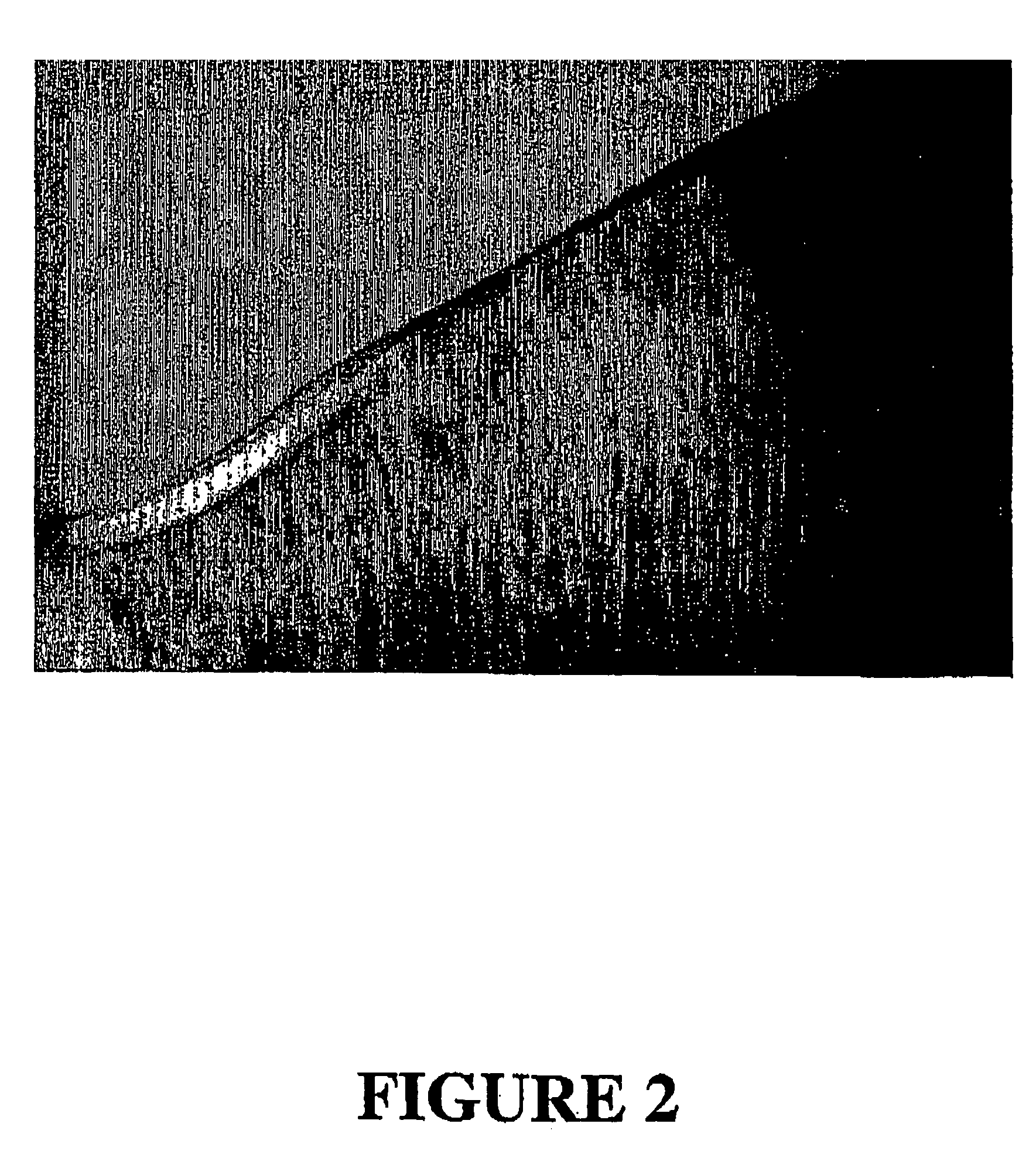Dental restorative materials
a technology of restorative materials and teeth, applied in the field of dental restorative materials, can solve the problems of underlying tooth caries, caries of the underlying tooth tissues, and the inability to restore the tooth surface to be susceptible to further dental caries
- Summary
- Abstract
- Description
- Claims
- Application Information
AI Technical Summary
Benefits of technology
Problems solved by technology
Method used
Image
Examples
example 1
Incorporation of CPP-ACP Into a Glass Ionomer Cement
Preparation of GIC Containing CPP-ACP for Compressive Strength and Wet Setting Time Assays
[0027]Twenty-four cylinders, 4 mm diam×6 mm long, were made from a glass ionomer cement (GICs) for the compressive strength test and twelve discs, 10 mm diam×5 mm thick, for the net setting time test. Four groups (A, B, C, D) were formed with the specimens (Table 1). Six specimens per group were made for the compressive strength test and three specimens per group for the net setting time test.
[0028]Group A (control) was prepared using a self-curing glass ionomer cement (Fuji IX GP, liquid batch No. 080561 and powder batch No. 061051, GC International, Tokyo, Japan). Groups B, C and D were prepared from the same GIC, containing 0.78, 1.56 and 3.91% w / w CPP-ACP respectively incorporated at a powder:liquid ratio of 3.6:1. The CPP-ACP (Recaldent™) was obtained from Bonlac foods Ltd (Melbourne, Australia). For the experimental groups, the CPP-ACP a...
example 2
Remineralisation of Dentine by Release of CPP-ACFP from a GIC Containing CPP-ACFP
[0045]Freshly extracted and caries-free human third molars, with no cracks and defects, stored in normal saline solution were used to prepare two box-shaped cavities, 7 mm long×3 mm wide×1.5 mm deep, along the cemento-enamel junction of both mesial and distal surfaces, using a cylindrical diamond bur, high-speed turbine and air-water coolant. The cavity margins were finished with a slow-speed cylindrical diamond bur to achieve a cavo-surface angle as close as possible to 90°. The teeth were divided into two groups (A, B). Teeth from group A were restored with a self-curing GIC (Fuji IX GP capsulated, batch No. 140493, GC International, Tokyo, Japan), and teeth from group B, the experimental group, was restored using the same GIC plus 1.56% w / w CPP-ACP prepared as in Example 1. The GIC liquid and the powder:liquid ratio for all the specimens remained as for the commercial product. The materials were mixe...
PUM
| Property | Measurement | Unit |
|---|---|---|
| Percent by mass | aaaaa | aaaaa |
| Percent by mass | aaaaa | aaaaa |
| Percent by mass | aaaaa | aaaaa |
Abstract
Description
Claims
Application Information
 Login to View More
Login to View More - R&D
- Intellectual Property
- Life Sciences
- Materials
- Tech Scout
- Unparalleled Data Quality
- Higher Quality Content
- 60% Fewer Hallucinations
Browse by: Latest US Patents, China's latest patents, Technical Efficacy Thesaurus, Application Domain, Technology Topic, Popular Technical Reports.
© 2025 PatSnap. All rights reserved.Legal|Privacy policy|Modern Slavery Act Transparency Statement|Sitemap|About US| Contact US: help@patsnap.com


